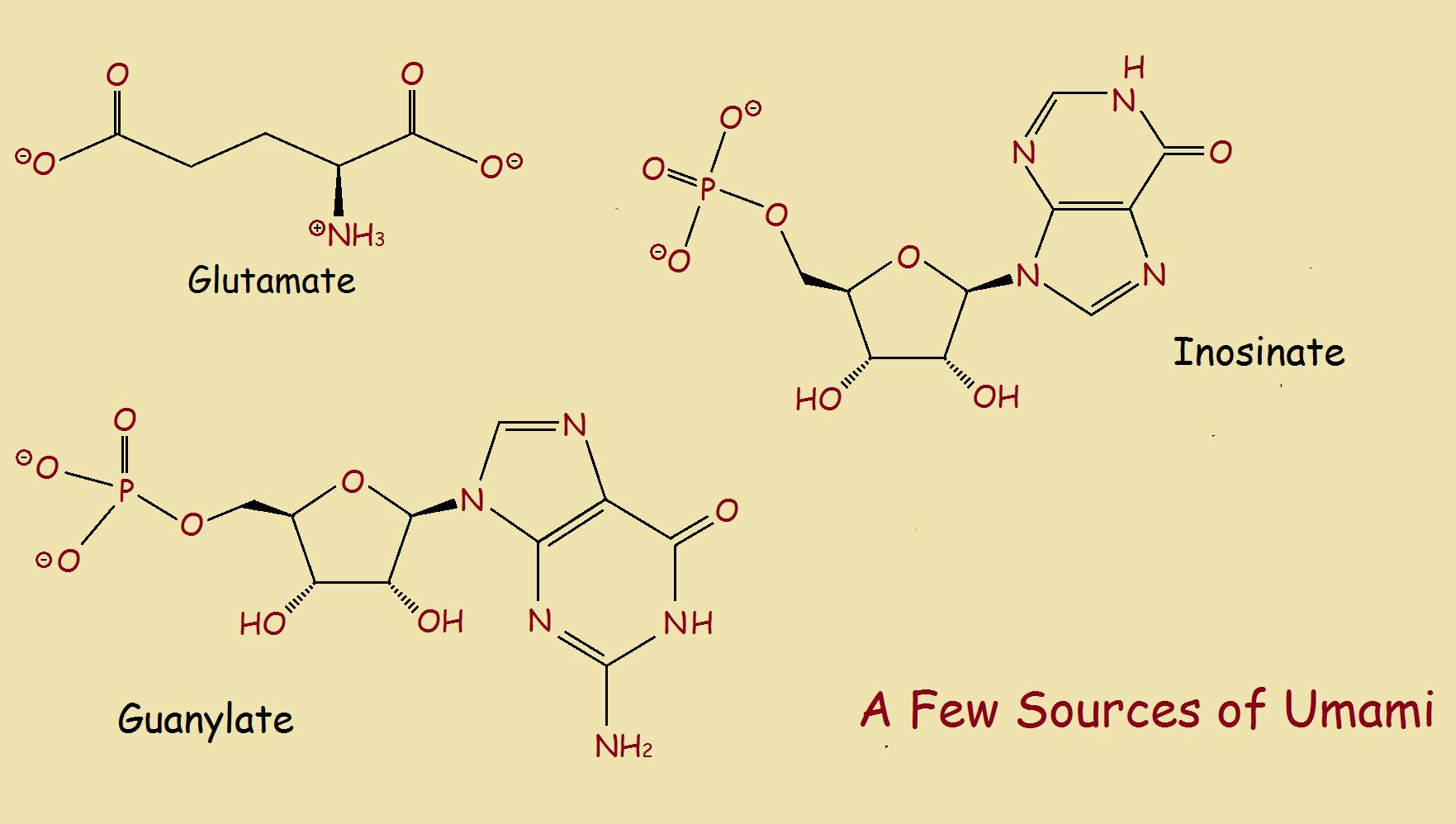
These basic tastes can be compared to the primary colors, red, yellow and blue. Any color we can come up with can be derived from some combination of red, yellow and blue. But with regard to the basic tastes, could it be there are actually more than four?
Enter Umami
A new variety of taste bud is postulated. From the Japanese word umami, roughly equivalent to the English savory, this new taste bud has been associated with the flavor of meat and meat broth as well as soy sauce and hydrolyzed vegetable protein. Can we pinpoint the chemistry involved?
Amino Acid Derivatives
The simplest component to this new flavor taste bud appears to be derivatives of glutamic acid, most notably monosodium glutamate or MSG. In America, this is a common ingredient in Chinese food. Are glutamates the only source of umami?
Additional Sources of Umami
It would seem unreasonable to assume the taste receptors responsible for umami are sensitive to only one basic chemical component. There should be other compounds found in food that should evoke such a response. And that is the case.
The Umami Information Center lists “inosinate and guanylate” Chemical structures are as shown (see image). They add further, aspartate, adenylate and succinate.

Things in Common
The savory taste receptors to date seem to have at least a few things in common. They generally contain nitrogen, they are commonly found in nature, and they are related, at least to a degree, to amino acids.
In Conclusion
It is quite possible there are other varieties of taste receptor, or at least flavors that taste receptors can detect apart from the 5 currently accepted.
Note: You might also enjoy Fermentation Adds Pleasure to Our Diet
References:
- ACS Publications: New Umami Amides…
- LiveScience The Tongue Map: Tasteless Myth Debunked
- MedicalNewsToday: What is Chinese Restaurant Syndrome?
- Umami Information Center: Umami Basics
← Back to Food and Health
← Home
